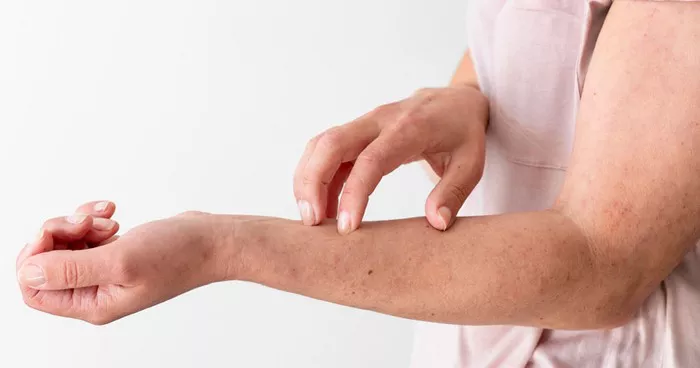Hives, medically known as urticaria, are a common skin condition characterized by raised, red, itchy welts. These welts can range in size from small dots to large blotches and can appear anywhere on the body. While hives are often associated with allergies, they can also be caused by viral infections. In this article, we will delve into the phenomenon of viral hives, exploring its symptoms, causes, and treatment options.
Symptoms of Viral Hives
Viral hives typically manifest as red, raised welts on the skin that are accompanied by intense itching. These welts can appear suddenly and may come and go over the course of several hours or days. In some cases, hives may be accompanied by other symptoms, such as fever, fatigue, or joint pain, depending on the underlying viral infection.
One of the distinguishing features of viral hives is their transient nature. Unlike chronic hives, which persist for six weeks or longer, viral hives usually resolve on their own within a few days or weeks. However, in some cases, they may persist for a longer duration, especially if the underlying viral infection is ongoing.
Causes of Viral Hives
Viral hives are triggered by viral infections, which stimulate the body’s immune system and cause it to release histamines. Histamines are chemicals that cause inflammation and itching in the skin, leading to the characteristic welts of hives.
Several viruses have been implicated in the development of viral hives, including:
1. Common Cold Viruses: Rhinovirus and other viruses that cause the common cold can sometimes trigger hives in susceptible individuals.
2. Herpesviruses: Certain members of the herpesvirus family, such as the Epstein-Barr virus (EBV) and cytomegalovirus (CMV), have been associated with viral hives.
3. Hepatitis Viruses: Viral infections such as hepatitis B and hepatitis C can occasionally lead to the development of hives.
4. Respiratory Viruses: Infections with respiratory viruses, such as influenza virus and respiratory syncytial virus (RSV), have also been linked to viral hives.
It is important to note that while viral infections can trigger hives, not everyone who is infected with these viruses will develop this skin condition. Factors such as genetics, immune system function, and overall health may influence an individual’s susceptibility to viral hives.
SEE ALSO: What Is Dermographism Urticaria
Diagnosis and Treatment
Diagnosing viral hives typically involves a thorough medical history and physical examination. Your healthcare provider may inquire about recent illnesses or exposure to potential triggers, such as new medications or foods. In some cases, additional tests, such as blood tests or allergy testing, may be recommended to rule out other possible causes of hives.
Treatment for viral hives often focuses on managing symptoms and providing relief from itching. This may include:
1. Antihistamines: Over-the-counter or prescription antihistamine medications can help reduce itching and inflammation associated with hives. These medications work by blocking the effects of histamines in the body.
2. Topical Treatments: Calamine lotion, corticosteroid creams, or menthol-based creams may be applied to the skin to soothe itching and reduce inflammation.
3. Avoiding Triggers: If a specific viral infection is identified as the trigger for hives, avoiding exposure to the virus and practicing good hygiene habits may help prevent recurrence of hives.
4. Moisturizers: Keeping the skin well-hydrated with moisturizing creams or lotions can help alleviate dryness and discomfort associated with hives.
In severe cases of viral hives or when symptoms are not adequately controlled with conservative measures, your healthcare provider may recommend other treatment options, such as oral corticosteroids or immunosuppressant medications. However, these treatments are typically reserved for rare cases and may carry potential side effects.
Preventing Viral Hives
While it may not be possible to completely prevent viral hives, there are steps you can take to reduce your risk of developing this skin condition:
1. Practice Good Hygiene: Wash your hands regularly and avoid close contact with individuals who are sick to reduce your risk of viral infections.
2. Manage Stress: Stress can weaken the immune system and increase susceptibility to viral infections. Finding healthy ways to manage stress, such as exercise, relaxation techniques, or hobbies, may help lower your risk of developing hives.
3. Identify Triggers: If you have a history of viral hives, try to identify and avoid potential triggers, such as specific viruses or medications that may exacerbate your symptoms.
4. Seek Prompt Treatment: If you develop symptoms of viral hives, seek medical attention promptly. Early intervention can help alleviate symptoms and prevent complications.
Conclusion
In conclusion, viral hives are a common skin condition characterized by red, raised welts that are triggered by viral infections. While viral hives can be uncomfortable and distressing, they typically resolve on their own within a few days or weeks. Treatment focuses on managing symptoms and providing relief from itching, and in most cases, no specific medical intervention is required. By practicing good hygiene, managing stress, and seeking prompt treatment when necessary, you can reduce your risk of developing viral hives and maintain healthy skin.
Related Topics:



























